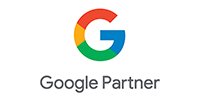Small businesses have their own unique set of challenges, often low on resource and capital but no shortage of drive and ambition, we know because we are a start-up too.
You know you have a product or service that is second to none, and you offer unbeatable value to your customers, yet you struggle to win new business.
In this blog, we’ll take you through a set of marketing strategies and tools that will make your business get found online, with the right content, and in the right context.
Inbound or Outbound
Before we take a deep dive into marketing planning and execution, it is important to understand the differences between these two types of marketing strategies.
Inbound Marketing
This type of marketing strategy relies on producing online content that the company’s target audience will find useful and valuable. The aim is to let your target audience find your company through your content rather than spending advertising dollars to attract customers.
The key premise of this strategy is to deliver value first, i.e. the company delivers value in the form useful content for its target audience without any expectation of business in return.
This blog is, in fact, a perfect example of inbound marketing.
Other examples of inbound marketing are – Research papers, case studies, infographics, presentations, videos, e-books, whitepaper, webinars, social media content etc.

Outbound Marketing
This type of marketing relies on promoting your services through traditional marketing channels such as Google search, online banners advertising, social media advertising, email, cold calling etc.
The idea here is to push your ads out to the customers to make them aware of your brand, products or services.
What type of marketing is right for my business?
This is more a question of resources rather than what’s a natural fit for your business.
Inbound marketing is resource intensive, you will need to produce content that will help your ideal customer solve their problem. Producing content in the form of blogs, webinars, videos, whitepapers require a fair bit of research and professional production if you want your content to stand out. Then there is a question of discovery, just producing content is not enough, your content needs to be found by your target audience, and you may end up using outbound marketing channels to promote the content anyway.
Outbound marketing, on the other hand, requires capital. Most online advertising channels will charge you a cost per click or 1000 ads they serve to your target audience. Then there is the cost of managing the campaigns, you either need to teach yourself how to run these campaigns well or hire a professional.
So which one is best for your business? The answer may well be that you need a bit of both. Producing good quality content showcases your skills and expertise in the subject area and using outbound marketing channels allows you to reach your target audience and get your content discovered.
If you are time poor – Hire a professional to carry out outbound marketing for you, as you start to discover the channels that work well for you, focus on improving the conversion rate of your website and good quality content can help with that. This channel will deliver results faster, performance will depend on the quality of your campaigns setup, execution, creative and analysis.
If you are money poor – Create a lot of good quality content and find ways to promote it through channels that are free – email, YouTube, Facebook, Instagram, Twitter, LinkedIn etc. This channels will take relatively longer to produce results (3-6 months), the performance and how quickly your content garners attention will depend on the quantity and quality of your content, creative execution and community nurturing.
Popular Inbound Advertising Channels
Blog – The main objective here is to showcase your expertise on the subject matter. Blogging on your own website will not help if there is no traffic arriving on your website. You either get traffic through social channels, guest blog on other niche websites or ensure that your blog ranks highly on Google.
Search Engine Optimisation – Although this is an inbound channel, it is neither cheap nor quick to execute. In a nutshell, in order to rank highly on Google, you need to ensure that your website is set up correctly (i.e. is indexable by Google) and other people are linking back to your website. A full explanation of SEO is outside the scope of this blog, however, you are more than likely going to need professional help to achieve results.
Social Media – Okay so this is the one that may seem like the easiest one to master, after all, you have your own social profile and a ton of friends. If you can relate to this then you will be surprised to hear how difficult it actually is for brands to connect with people in a meaningful way. If all you are doing is belting out content about how great your products and services are then that’s not going to get you anywhere. Why? I hear you ask! That’s because everyone else is doing exactly that. You need to add value to this relationship and you do that by posting content that surprises, delights, educates or entertains.
A note on Social Media – Social Media is often seen as a free advertising channel, and it used to be but that is no longer the case. For example, typically only 2% of your followers will see the content that you post. So firstly you got to find a way to get followers and then pay to show you content to all your fanbase.
Opt-in email list – Let’s say that the content that you are producing is best-in-class, and people are always asking you for more. You can start making this content available; in exchanges for a name and an email address. This is a great way of building an email database of prospects that are already looking for information relates to the products and services you offer.
Press and PR – This is a tried and tested means of generating brand awareness but you need something noteworthy to publish and you’d need a PR agency to get onto premium news-sites or publications.
Thought leadership – Write a book, run webinars, produce e-learning courses, speak at industry events, guest blog on industry news sites. Basically, raise your profile amongst your target audience so that they can easily find you and trust you.
Popular Outbound Marketing Channels
Paid Search Advertising – As the name suggests, you pay to feature on search results page, and you are charged for clicks on your ads. Paid search advertising on Google is one of the easiest ways to ensure that your business is found at exactly the point at which your potential customers are looking for the products and services you offer.
This is one of the most valuable marketing channels for businesses but it is also one that can lead to a lot of wasted spend if the campaigns aren’t managed properly. You may be wondering if it is easy to set up and run a campaign on Google AdWords, and it may be if you are tech-savvy and have the desire and time to learn new things, however, you are unlikely to fulfill this channel’s full potential without expert help.


Display advertising – In the online world, this channels is equivalent to TV advertising. You can reach millions of people with a relatively small budget (£250 – £500 depending on industry) making it accessible for SMBs. With display advertising, the targeting can be really precise where you can easily define the demographics, interests, and behaviours of your typical customer.
You are able to reach your target audience at scale with relatively low spend and increase awareness of your products, services or the brand. The ads do require some creative element in order to ensure that they stand out but an agency or freelancer can help with that. Display advertising is not just limited to banner ads, within this marketing channel you can promote videos, and create interactive ads on platforms such as Gmail.
Remarketing – The most effective type of display advertising is remarketing (a.k.a. retargeting). The idea is pretty straight-forward, users visit your website but don’t buy or fill out the contact form (likely to be 99% of your web visitors), these visitors drop in the remarketing audience pool, you can then retarget them on other websites through the display banner ads or video ads and try to win them back either by reminding them of your USPs or entice them with an offer.
In order to ensure that your brand doesn’t come across as intrusive, you can limit the number of times an ad is shown to a user in a day. You can also ensure that you stop targeting them after a period of time according to the time your typical customer takes to make the purchase decision.

Social Media advertising – Most people are familiar with this form of advertising but what you may not be aware of is how precisely you are able to target your audience. By way of example, if you are an interior decorator, you are able to target people based on the fact they have moved house recently. As a restaurant wanting to attract tourists, you are able to target people on Facebook that are in the vicinity of your restaurants and are actually tourists.
As a B2B example, you are able to target people on LinkedIn based on the company they work for currently or have done previously, their job title, seniority, industry, salary etc. The targeting options are virtually unlimited and by ensuring that you layer different targeting attributes, you are able to promote your products and services with pin-point precision and at scale.
Influencer marketing – If you sell lifestyle products or services then influencers can be a relatively cheap way of getting your product and services in front of thousands of people. You will, however, need to seek out influencer(s) whose target audience closely match your own and ensure that their audience is actually engaging with them. Getting followers is quite easy to do, keeping them engaged is not. So don’t be fooled by the number of followers, the key performance indicator here is engagement rate.
Affiliate marketing – This is effectively a revenue (and sometimes profit) share scheme whereby you get affiliates to send traffic to your website and you will typically only pay if the customer makes a purchase. There are a few different models of an affiliate marketing programme:
- Voucher – You can create discount codes and publish on voucher codes websites
- Cashback sites – You can have a tie-up with cashback sites such as TopCashBack or Quicdco
- Product aggregator websites – Think comparison sites such as Go Compare
- Review websites – There are tons of these in every niche
Paid email database – This effectively involves a business paying a provider for an email database for marketing purposes. This no different to cold calling, in that it’s an intrusive form of marketing and although it can yield results, it’s not as effective as some of the other channels. This strategy is going to be redundant soon with GDPR enforcement in on 25th May.
TV, Billboards & Sponsorships – Although we are leaving the realms of digital marketing, sponsorships, billboards, and TV advertising are all forms of outbound marketing.
Summary
Firstly, thanks for making this far. We hope this blog gives you a few ideas of different marketing channels available to you and the pro and cons of each.
We would recommend using a mix of both inbound and outbound marketing strategies (resource permitting) as they ultimately feed one another; creative content (inbound strategy) leads to creative advertising and unique angles to target your audience and advertising through traditional channels (outbound strategy) allows you to get traffic to your content.
You may be wondering how on earth you do a bit of everything, well, one step at a time.
Ask yourself, what’s your focus right now? Do you need to win new business quickly? If so then outbound advertising will get you quick results.
If you don’t have the advertising spend and additional budget to get professional help then inbound marketing is the answer but be aware that it can take from 3-6 months to have enough content to build a community and a fanbase let alone generate leads or sales.
We hope you enjoyed reading this blog. We are outbound marketing specialists so if you need help or advice then do not hesitate to contact us via the contact form.








